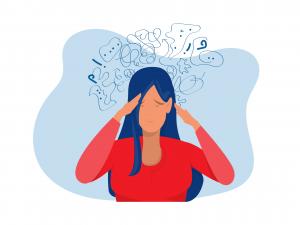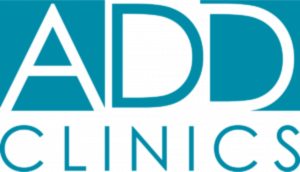
Clarifying the Difference Between ADD and ADHD: Dr. Stanford Owen Explains Distinct Characteristics
Attention Deficit Disorder (ADD) is not simply Attention Deficit Hyperactivity Disorder (ADHD) without the hyperactivity. Though both fall under the umbrella of neurodevelopmental disorders affecting attention and executive function, the clinical presentation and challenges associated with each type can differ significantly.
“ADD is a presentation of ADHD, but it shows up without the hallmark hyperactivity. That difference changes how it’s perceived, diagnosed, and often misunderstood,” said Dr. Owen.
Understanding the Terminology
In 1994, the Diagnostic and Statistical Manual of Mental Disorders (DSM-IV) revised the terminology from ADD to ADHD, introducing three presentations:
ADHD – Predominantly Inattentive Presentation
ADHD – Predominantly Hyperactive-Impulsive Presentation
ADHD – Combined Presentation
Under this classification, what was once referred to as “ADD” is now formally categorized as “ADHD – Predominantly Inattentive Presentation.” Despite this update, the term ADD continues to be used informally by patients, educators, and even healthcare professionals to describe individuals who exhibit attention difficulties without hyperactivity.
Dr. Owen emphasizes that this semantic overlap often causes confusion, especially when symptoms are internalized rather than externalized.
Distinct Symptoms and Challenges
Individuals with the inattentive presentation often experience persistent difficulties with focus, organization, task completion, and memory. These symptoms tend to manifest as daydreaming, forgetfulness, or appearing disinterested, rather than through physical activity or impulsivity.
As a result, this presentation frequently goes undiagnosed, particularly in females and adults, where hyperactive behavior is absent. Many individuals may struggle silently with academic, professional, or personal responsibilities without ever being identified as having a neurodevelopmental disorder.
Hyperactive-impulsive presentations, on the other hand, often attract earlier recognition due to more disruptive or visible behaviors. These may include excessive talking, restlessness, fidgeting, or interrupting conversations — behaviors more likely to prompt referrals for clinical evaluation in children.
Dr. Owen notes that these divergent behavioral profiles affect how quickly someone may be flagged for assessment. “The lack of external symptoms in inattentive types often delays recognition. Many are misinterpreted as lazy, disorganized, or unmotivated — when in fact, their brains are wired differently.”
Diagnosis and Assessment
The assessment process for ADD or ADHD involves a comprehensive evaluation. This includes symptom checklists, behavior rating scales, clinical interviews, and — when possible — feedback from parents, teachers, or colleagues. In adults, the diagnostic process can be complicated by the presence of coping strategies that mask symptoms or comorbid conditions like anxiety or depression.
Because the inattentive type lacks outward hyperactivity, clinicians must be particularly thorough to avoid underdiagnosis or misattribution. In some cases, the individual may not even recognize the symptoms as abnormal, having developed workarounds over time that minimize the visibility of their difficulties.
Treatment Considerations
While treatment approaches for ADD and ADHD often overlap, differences in symptom expression may influence the preferred methods. Both pharmacological and behavioral strategies can be effective, but selecting the appropriate medication, dose, and support plan depends on symptom profile and functional impairment.
Stimulant medications are commonly used, but dosing may vary for those without hyperactivity. Behavioral strategies typically emphasize time management, organizational skills, and environmental structuring. Inattentive-type patients often benefit from interventions targeting internal distractions and task persistence.
However, around 40% of “hyperactive” patients will have a ‘calming’ effect from success. That is, what is better to anxiousness or depression than success. "I saw a patient today," claims Dr. Owen, "who literally started sleeping normally, felt much calmer, quit pacing, and stopped what she called “circular thinking” of problems going around and around in her head, just because she was succeeding in all aspects of her life—No Worries!"
Dr. Owen cautions that inattentive presentations, if left untreated, may lead to chronic underachievement, low self-esteem, or academic and occupational difficulties.
Gender and Age Differences
Research shows that inattentive-type ADHD is more prevalent among females, and often goes unnoticed in childhood. Hyperactive boys are more frequently diagnosed due to behavioral disruptions, while girls who are quiet, distracted, or withdrawn may be overlooked.
Adults with inattentive symptoms often seek help later in life — typically when responsibilities increase, coping mechanisms fail, or their children are diagnosed, prompting a retrospective self-assessment.
Dr. Owen states that understanding how these symptoms evolve across the lifespan is critical. “Inattentive symptoms in adults can manifest as missed deadlines, difficulty managing time, or zoning out during conversations. These aren’t just bad habits — they’re neurological patterns.”
Ongoing Misconceptions
One of the biggest challenges facing patients with inattentive-type ADHD is societal misunderstanding. Without the visible symptoms of hyperactivity, affected individuals may be mischaracterized as apathetic, slow, or careless. This not only delays diagnosis but contributes to stigmatization and internalized shame.
By distinguishing between the types of ADHD and recognizing the unique challenges of the inattentive presentation, more accurate diagnoses and effective interventions can be implemented.
About ADD Clinics
ADD Clinics, led by Dr. Stanford Owen, provides evaluation and management services for children, adolescents, and adults experiencing attention and focus difficulties. Located in Gulfport, Mississippi, the clinic emphasizes accurate diagnosis, comprehensive treatment planning, and individualized care for those affected by neurodevelopmental disorders.
Morgan Thomas
Rhino Digital, LLC
+1 504-875-5036
email us here
Visit us on social media:
Facebook
Distribution channels: Culture, Society & Lifestyle, Education, Healthcare & Pharmaceuticals Industry
Legal Disclaimer:
EIN Presswire provides this news content "as is" without warranty of any kind. We do not accept any responsibility or liability for the accuracy, content, images, videos, licenses, completeness, legality, or reliability of the information contained in this article. If you have any complaints or copyright issues related to this article, kindly contact the author above.
Submit your press release

